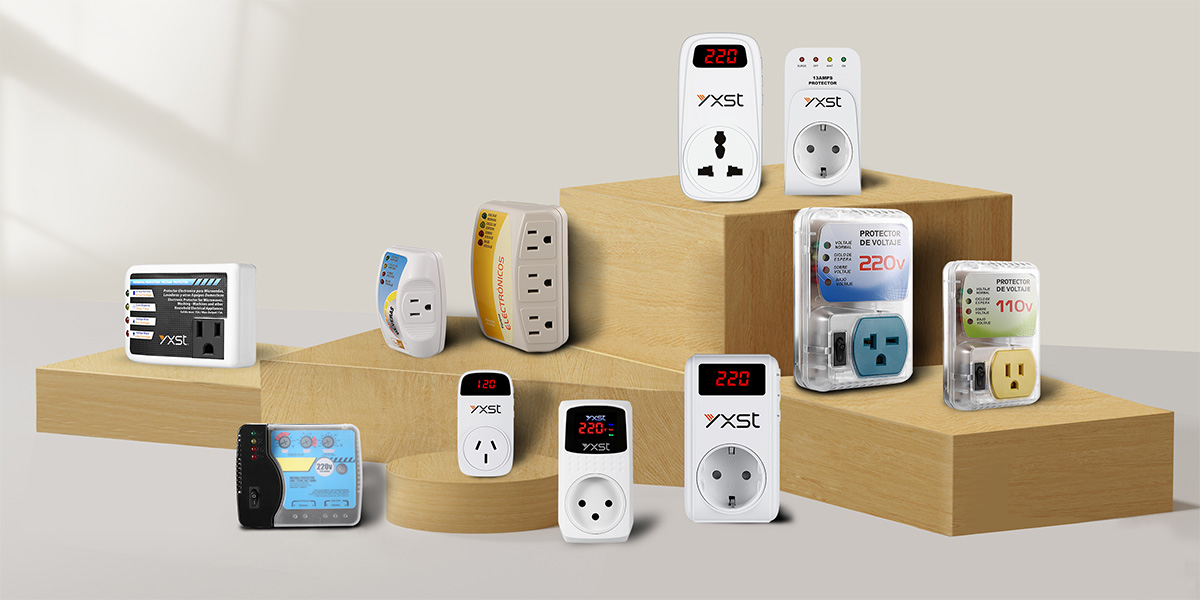This article introduces the parameters of the automatic voltage protector. Can the automatic voltage protector prevent high voltage? If you don’t know this knowledge when you read this article, please read it carefully.
Automatic voltage protector parameter introduction
An automatic voltage protector is a device used to protect electrical equipment from voltage anomalies (too high or too low).

Here are the parameters:
Operating Voltage:
Definition: This is the voltage range in which the protector can work properly. The automatic voltage protector monitors the voltage within this voltage range and protects.
Example: If the operating voltage range of a protector is 220V±10%, it can work properly in the voltage range of 198V to 242V.
Operating Frequency:
Definition: This is the AC frequency range in which the protector can work properly. Most electrical equipment operates at 50Hz or 60Hz.
Example: An automatic voltage protector may be suitable for 50Hz or 60Hz power frequency, depending on the power system standards in the area.

Under Voltage Cut-off:
Definition: When the voltage is lower than the set undervoltage value, the protector will automatically cut off the power supply to protect the equipment from low-voltage damage.
Example: If the undervoltage cut-off is set to 180V, the protector will disconnect the power supply when the voltage is lower than 180V.
Over Voltage Cut-off:
Definition: When the voltage is higher than the set overvoltage value, the protector will automatically cut off the power supply to prevent the equipment from being damaged by excessive voltage.
Example: If the overvoltage cut-off is set to 240V, the protector will disconnect the power supply when the voltage is higher than 240V.
Delay Time:
Definition: The delay time set after the protector detects a voltage anomaly. During this time, the protector will not immediately cut off the power supply, but give the system time to recover to prevent frequent switching operations.
Example: If the delay time is set to 5 seconds, the protector will wait 5 seconds after detecting a voltage anomaly before cutting off or restoring operations.
Output Capacity:
Definition: This is the maximum current or power load that the protector can withstand and control. Ensure that the protector can handle the current load of the connected equipment.
Example: If the output capacity is 10A, the protector can safely control a current load of up to 10 amperes.
These parameters combine to define the functions and performance of the automatic voltage protector, helping to ensure that electrical equipment operates under normal operating conditions and prevents damage due to voltage fluctuations.

Can automatic voltage protector prevent high voltage?
Yes, automatic voltage protectors can prevent high voltage from causing damage to electrical equipment.
They usually have an overvoltage cutoff function, which means that when the voltage exceeds the set safety range, the protector automatically cuts off the power supply to prevent the equipment from being damaged by high voltage.
Specifically, the automatic voltage protector works as follows:
Overvoltage detection: The protector continuously monitors the power supply voltage. When the voltage exceeds the set overvoltage value, the protector detects this abnormality.
Overvoltage cutoff: When the voltage is detected to exceed the preset overvoltage threshold, the protector immediately cuts off the power supply to protect the connected electrical equipment from high-voltage damage.
Restoration function: Some protectors also have a recovery function. When the voltage falls back to the safe range, the protector automatically restores the power supply to avoid additional impact on electrical equipment caused by frequent switching operations.
Summary
The main function of the automatic voltage protector AVP is to protect electrical equipment from excessive voltage, so they are very important safety devices in the power system.




